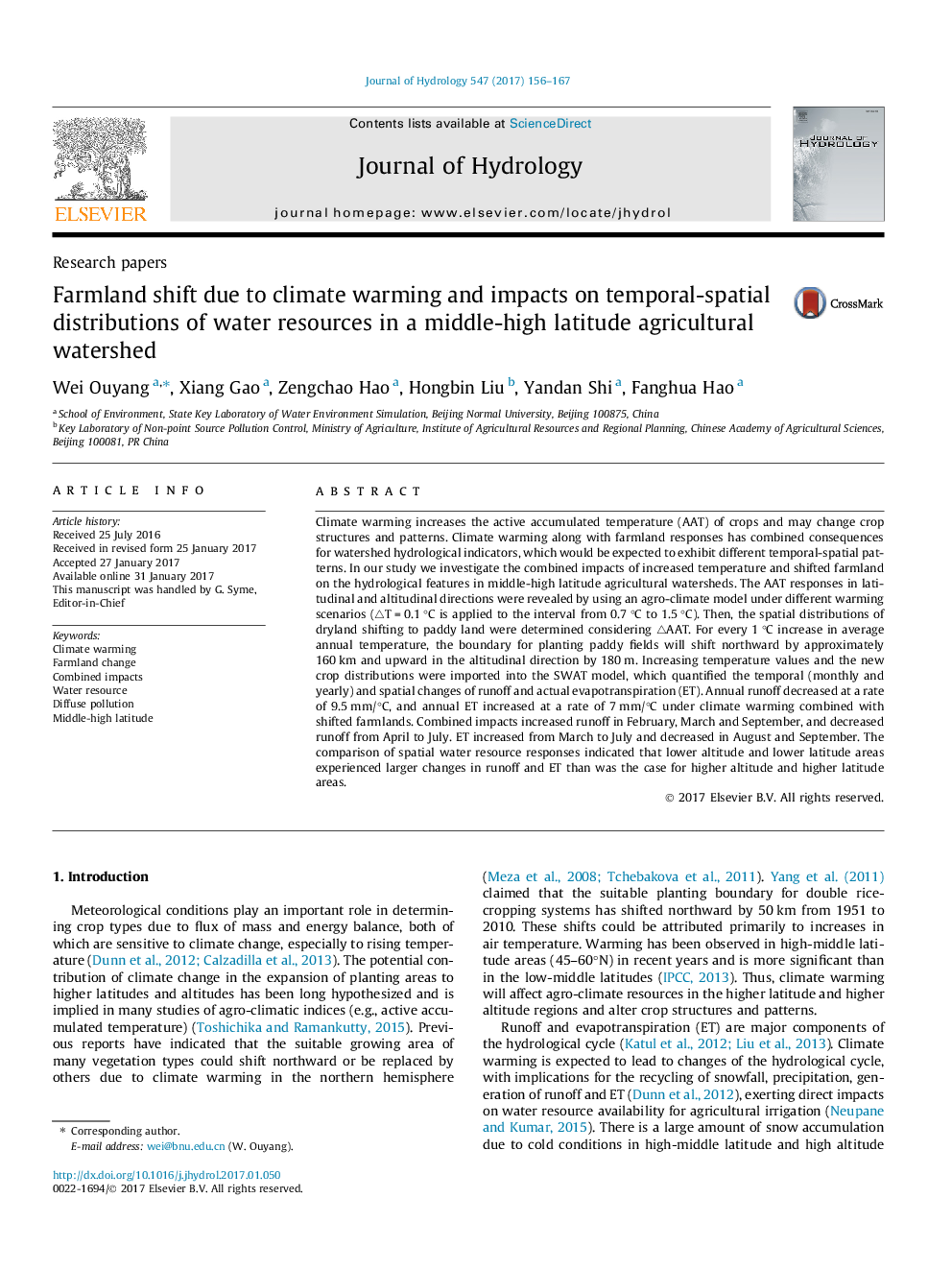| کد مقاله | کد نشریه | سال انتشار | مقاله انگلیسی | نسخه تمام متن |
|---|---|---|---|---|
| 5771037 | 1629907 | 2017 | 12 صفحه PDF | دانلود رایگان |

- The combined impacts of climate warming and its-induced farmland shifts was assessed.
- Climate warming drove expansion of paddy field both horizontally and vertically.
- Combined impacts induced a greater lack of water resources during warm season.
- Lower altitude or latitude sub-basins experienced greatest changes in runoff and ET.
Climate warming increases the active accumulated temperature (AAT) of crops and may change crop structures and patterns. Climate warming along with farmland responses has combined consequences for watershed hydrological indicators, which would be expected to exhibit different temporal-spatial patterns. In our study we investigate the combined impacts of increased temperature and shifted farmland on the hydrological features in middle-high latitude agricultural watersheds. The AAT responses in latitudinal and altitudinal directions were revealed by using an agro-climate model under different warming scenarios (â³T = 0.1 °C is applied to the interval from 0.7 °C to 1.5 °C). Then, the spatial distributions of dryland shifting to paddy land were determined considering â³AAT. For every 1 °C increase in average annual temperature, the boundary for planting paddy fields will shift northward by approximately 160 km and upward in the altitudinal direction by 180 m. Increasing temperature values and the new crop distributions were imported into the SWAT model, which quantified the temporal (monthly and yearly) and spatial changes of runoff and actual evapotranspiration (ET). Annual runoff decreased at a rate of 9.5 mm/°C, and annual ET increased at a rate of 7 mm/°C under climate warming combined with shifted farmlands. Combined impacts increased runoff in February, March and September, and decreased runoff from April to July. ET increased from March to July and decreased in August and September. The comparison of spatial water resource responses indicated that lower altitude and lower latitude areas experienced larger changes in runoff and ET than was the case for higher altitude and higher latitude areas.
Journal: Journal of Hydrology - Volume 547, April 2017, Pages 156-167